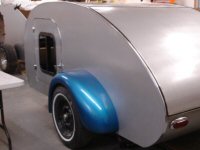In a 120 volt ac circuit the ground is there (beleive it or not ) to cause a problem. The old fridge that only had two wires and no ground could shock you because it was not grounded. This was beacuse it could have a wire shorted to the case. When you touched the case you would get shocked. But the fridge would keep running. It did not care if the case was hot or not. [old fix: pull the plug out rotate it 180 and plug it back in] If you ground the case and a wire shorts it causes a (problem) overload and trips the breaker or blows the fuse. Now you have to fix the shorted wire. But if has failed safe and you do not get shocked.
Because most things in a house do not conduct electricity the shorted appliance would not be noticed if it did not have a ground.
A car has a metal frame. To save money on wire they usually attach one side of the battery to the frame. This is usually the negative (-) and most people call it ground. If a wire shorts out in a car it will most likely hit the frame (ground) and (cause a problem) blow a fuse. Also 12 volts is not enough electric (pressure) to force the electrons through your body and shock you.
In a house 110 volt circuit the "ground" in not designed to carry current. It is there to cause a problem if something shorts out.
In a car with a metal body the "ground" is a use to carry current.
Now we have a TD with a wood box on top of a metal frame. Pulled by a 12 volt dc car and uses 110 volt AC shore power.
Using the frame to carry current in the DC and using the frame to cause a problem in AC would be fine IF:
1.) You use a ground fault device before it is attached to the TD (upstream).
2.) You test the shore power to see if it is wired correctly. You can buy a tester a walmart.
3.) Keep 110 volt AC and 12 volt DC wires separated. As said before "Bad things will happen if they ever cross".

4.) You only connect the AC ground in
ONE place on the frame. This will ensure that the frame will not carry current. You have to run ground wires to each of your ac outlets
Do not use the frame to gound the 110 AC outlets. You can use the frame to carry the current in the DC circuits. However since we have a wood box for a TD and not a metal car body I would recommend that you run each of your neg 12 volt dc wires back from each of the 12 volts outlets to a common 12 volt ground.
Thanks,
David
 I am planning on installing a WFCO 8945 converter. This unit is a power center, 45 amp capacity with 5 AC branches and 11 DC branches. It also has a built in three stage charger. I don't plan on using all those branches initially but I like to have expansion room for future if it is needed. I am thinking of installing a 30 amp feed power cord either to a inlet plug on the side of my cargo trailer or just wire directly to the converter. I am also planning on installing a 12 volt deep cycle battery either on the tongue (if there is space because this trailer is a v-nose) or inside the trailer in a vented battery box. I would like 2 - 6 volt batteries but they are a bit pricey.
I am planning on installing a WFCO 8945 converter. This unit is a power center, 45 amp capacity with 5 AC branches and 11 DC branches. It also has a built in three stage charger. I don't plan on using all those branches initially but I like to have expansion room for future if it is needed. I am thinking of installing a 30 amp feed power cord either to a inlet plug on the side of my cargo trailer or just wire directly to the converter. I am also planning on installing a 12 volt deep cycle battery either on the tongue (if there is space because this trailer is a v-nose) or inside the trailer in a vented battery box. I would like 2 - 6 volt batteries but they are a bit pricey.
 My question(s) is - Is there any other device, component, etc. that anybody might think of that I need to install along with the items that I have listed above?
My question(s) is - Is there any other device, component, etc. that anybody might think of that I need to install along with the items that I have listed above?





